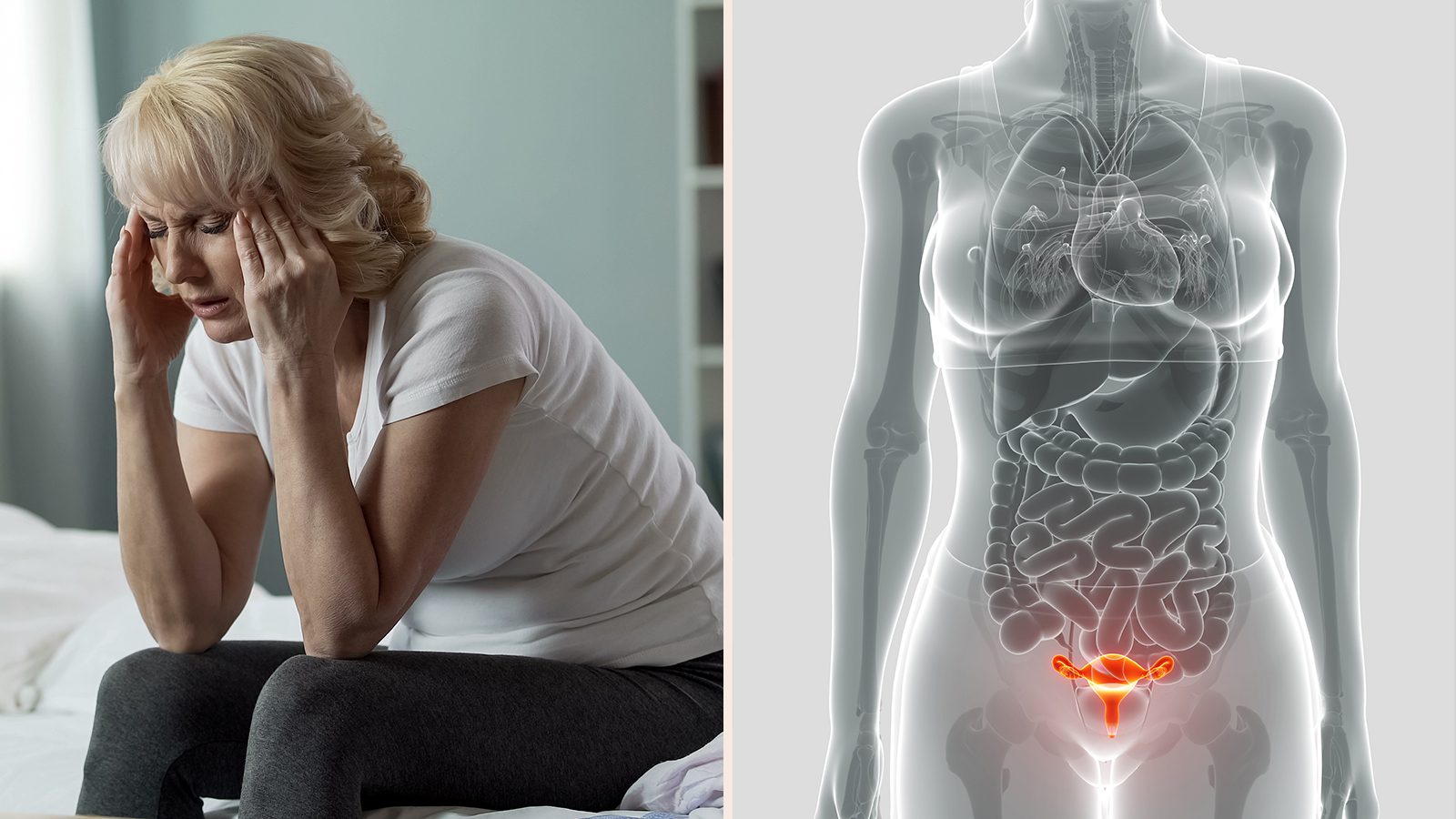Menopause symptoms are different for everyone and can vary from mild to intense. Sometimes the symptoms pass quickly, but that isn’t always the case. Either way, some exercises can help reduce menopause symptoms.
Menopause is a transition women go through as they age and marks the end of their menstrual cycles. While it can be hard to adapt, you can adjust your lifestyle to help alleviate the changes. Some exercises can help, making menopause easier to handle.
Rather than viewing menopause as a nuisance, you can think of it as a reminder to take care of yourself. Staying active is one of the best ways to do this, and you’ll quickly notice the benefits.
You don’t have to do all the exercises to reduce menopause symptoms. Try them out and decide which ones you like the most and which work best for your body.
Thirteen Menopause Symptoms
When menopause occurs, a woman’s hormone levels fluctuate and then decline. The hormonal change triggers many symptoms, including the following:
- hot flashes
- mood swings
- weight gain
- vaginal dryness
- fatigue
- loss of muscle mass
- decreased bone density
- sleep disruptions
- slower metabolism
- changes in appetite
- bladder issues
- constipation
- tingling extremities
The symptoms differ for everyone. Some women won’t experience what others do, and the severity can shift for each person.
Benefits of Exercise During Menopause
Exercise during menopause offers many benefits, including the following:
Strengthening Your Bones
Reduced estrogen during menopause can increase your risk of osteoporosis and bone fractures. Regular exercise decreases the risk of these issues as it strengthens your bones.
Improving Your Mood
The hormonal changes during menopause can trigger depression and other mental health issues. Staying physically active can ease these conditions, helping you feel better. It also deepens sleep, lowers pain, and reduces sleep to improve your overall well-being.
Maintaining Healthy Weight
Menopause can trigger weight gain because women often lose muscle mass and gain abdominal fat during this time. Physical activity can help prevent weight gain or promote weight loss if necessary. It is also beneficial because gaining weight during menopause increases your risk of heart disease and type 2 diabetes.
Reducing Symptoms
Staying active and taking care of your body can make it easier to handle the symptoms associated with your symptoms. While exercise promotes overall health, it can also help you stay positive about natural life changes.
Exercises That Reduce Menopause Symptoms
Experts suggest aiming for around 150 minutes of moderate aerobic activity each week. Vigorous aerobic movement can lower that recommendation to 75 minutes each week.
You can spread your workout throughout the week as you see fit. The best exercises are easy on your joints and help reduce menopause symptoms. Some ideas include the following:
1 – Brisk Walking
You can engage in brisk walking no matter where you are. It offers many benefits, including joint pain relief, weight loss, and weight maintenance. Brisk walking gets your blood pumping and raises your heart rate.
2 – Assisted Yoga
Assisted yoga involves improving nerve mobility and muscle flexibility. It focuses on the fascial lines connecting and wrapping around muscles, nerves, and organs. Yoga is a relaxation exercise that improves flexibility, balance, and muscle tone. It can also ease the effects of stress, anxiety, and depression.
3 – Hand Weights
Using hand weights during menopause can help prevent weight gain and improve bone density. Hand weights require using your muscles and bones to work, helping reduce some menopause symptoms. Start light and work your way up to heavier weights as you get comfortable.
4 – Resistance Band Training
Experts indicate that resistance band training can improve hormonal decline, body mass and fat percentage, and blood pressure. It can also help keep your bones and muscles strong. Resistance band training is typically low-cost, and you can do it anywhere.
5 – Tai Chi
This exercise is an ancient Chinese natural health therapy. It can help ease menopause symptoms, including depression, anxiety, and mood disturbances. Tai Chi involves meditation, breathing, and exercise simultaneously, making it highly beneficial. This exercise can also increase bone mineral density for women after menopause.
6 – Water Aerobics
Water aerobics is beneficial for easing menopause symptoms because it targets many areas. This exercise increases flexibility and relieves joint pain, improving blood circulatory problems. Water aerobics also improves heart and lung function.
Additionally, this exercise builds strength and promotes balance, reducing your risk of getting injured from a fall. The water provides gentle resistance, which isn’t as hard as other resistance exercises. It’ll also help you maintain a healthy weight.
7 – Balance Training
Exercises that promote balance training can help reduce menopause symptoms. They help prevent or decrease neck, back, and shoulder pain.
These exercises also help strengthen your core and decrease your risk of falling. Balance training can be easy as you can do it while brushing your teeth or doing your hair. Stand on one leg while getting ready or doing other activities that don’t require much movement.
8 – Bicycling
Cycling is low-impact and easy on your joints. Bicycling outside also allows you to get vitamin D and fresh air. People of all fitness levels benefit from cycling as you can go at your own pace and work up to more intense sessions.
Some of the specific benefits of bicycling include the following:
- cardiovascular health
- maintaining blood pressure
- weight management
- cardiorespiratory health
- improved mental health
- increased fitness levels
- promotes balance and coordination
9 – Flexibility Stretches
Your muscles and tendons can stiffen during menopause, and flexibility stretches can prevent or ease it. It can also alleviate tingling extremities.
Those who work at a desk or don’t get much movement can reap the most benefits from stretching. You can take a break to stretch your muscles anytime throughout the day.
10 – Swimming
As a low-impact exercise, swimming is highly beneficial for reducing menopause symptoms. It relieves joint pain because it doesn’t put pressure on the joints. However, it increases your heart rate and burns calories to help you maintain a healthy weight.
Other benefits of swimming include the following:
- strengthening your heart
- reducing blood pressure
- building bone density
- promoting muscle tone
- building endurance
How to Stay Motivated to Exercise
When starting an exercise routine, you must find ways to stay motivated. Staying motivated will help you stick to a routine and get enough exercise weekly.
Setting goals requires being realistic. You can’t expect to stick to a fitness routine if the goals are unachievable. It can quickly discourage you, and you might give up before forming good habits.
Your goals should also be specific, giving you something to strive toward. Rather than setting a vague goal, such as working out more, consider committing to a set timeframe daily. As you build strength and get better at exercising, you can adjust your goals to push yourself a little more.
Other Ways to Ease Menopause Symptoms
Exercise isn’t the only way to ease menopause symptoms, and you can use other methods along with it.
Consume More Calcium and Vitamin D
The hormonal changes you experience during menopause can weaken your bones. It increases your risk of developing osteoporosis. However, changing your diet can help ease this issue.
Consume more foods containing calcium and vitamin D to promote bone health. Studies show that increasing vitamin D intake decreases your risk of hip fractures. Some foods rich in vitamin D or calcium include:
- dairy products
- green, leafy vegetables
- tofu
- beans
- sardines
- calcium-fortified foods
- eggs
- cod liver oil
Get Outside
Your skin produces vitamin D, but only when exposed to the sun. Getting outside more often can promote bone health as your vitamin level increases.
Increase Your Fruit and Vegetable Intake
As low-calorie foods, fruits and vegetables can help you feel full while preventing weight gain. They can also help you lose or maintain weight when necessary. Fruits and vegetables also help prevent bone loss, with studies showing that those who consume many of them experience less bone breakdown.
Fruits and vegetables also prevent heart disease. Your risk of heart disease often increases after menopause, so it’s essential to consider this aspect.
Avoid Foods That Trigger Symptoms
Some foods and drinks can trigger menopause symptoms, especially when consumed at night. These foods might lead to night sweats, hot flashes, or unexpected mood changes.
Different foods and drinks affect people differently, so consider keeping a symptom diary. When you experience symptoms, track what you consumed shortly before having them. You can identify which foods trigger your symptoms, helping you avoid the ones that worsen them.
Many people experience issues with alcohol, caffeine, sugar, or spicy foods. Keep these things in mind as you track your symptoms because you might also have problems with them.
Final Thoughts on Exercises That Reduce Menopause Symptoms
Menopause is unavoidable, but you can make lifestyle changes to ease the transition. Exercising can reduce menopause symptoms, making you feel better and improving your overall well-being.
You can do some of the exercises at home, or you can join a fitness club or gym. Working out with friends may make the experience more enjoyable. Start slow and learn what you like so exercising becomes a part of the day you look forward to experiencing.

















 Community
Community

